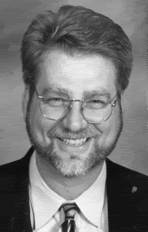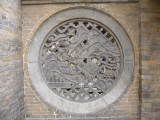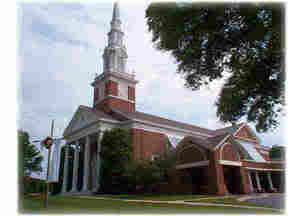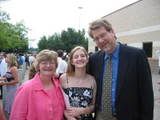the problems and possibilities of healing
When you hear the word healing, in the context of faith and church, what images form in your mind? For some it might be parents refusing to get proper medical care for their child because of their religious beliefs. For others it might be a man in a polyester suit “slaying people in the spirit”, with another man throwing down a cane or a woman getting up out of a wheelchair and everyone applauding. An understanding of healing is present in each of these cases.
For most of us, if we are honest, religious healing is a strange idea, and so we reject it. But there is one problem, at least for a follower of Jesus: he was a healer. As I mentioned in the blog post on health care in America, Jesus did three things: he preached, he taught, and he healed. The kingdom of God encompassed all of life, and the renewal of the whole person: the spirit (preaching), the mind (teaching) and the body (healing).
Healing, religious healing seems like a strange idea to us…and yet Jesus was a healer. The gospels are filled, page after page, with stories of his healings: Peter’s mother in law, a man in the synagogue with an unclean spirit, the daughter of one of the synagogue leaders, a paralyzed man, a woman with uncontrolled bleeding, a man who had been bound by chains and lived in the graveyard, those who could not see or hear, a leper, a woman who touched the garment of Jesus while he was walking through a crowd, a man with a withered hand, the slave of a roman soldier, a widow’s son, the daughter of Jairus, the man who had been an invalid beside the pool for 38 years, the daughter of a Canaanite woman, his friend Lazarus, I could go on….you can almost read the details of Jesus’ life and it is as if he lives in a perpetual state of triage. He is constantly around people with profound needs, and the narrative thread of the gospels is that he touches people and he heals them.
What do we make of this? Well, one response would be simply to deny the truthfulness of these incidents; we might say, “Jesus was a caring person, a humanitarian leader, a wise teacher, but the miracles, I am not so sure”. We could take our scissors and cut out these stories, but, in essence, we would end up with a Bible full of holes, but this would present another problem: the healing of the man born blind leads to one of his great teachings: “I am the light of the world”. The healing of Lazarus leads to another: “I am the resurrection and the life”. And so it goes. The preaching, teaching and healing are an interconnected web, just as the spirit, mind and body are a unity.
Another way to view the healings is to say that “they were unique, they took place in a particular circumstance, Jesus was divine, but all of that is confined to a moment in history, first century Palestine, we live in a modern era.” Healings are history, but these portions of the gospels don’t apply to our lives. And so maybe we don’t cut them out of our Bibles, but we skip over them.
So, the healings are not true, or they are not relevant. For me, as a Christian, neither of these responses is adequate. I want to propose an alternative: the healing ministry of Christ is at the very heart of the gospel, it is both true and relevant, healing comes to us as gift and as commandment , healing meets us at the point of our greatest need. And the integrity of the gospel---think back, to last week and the parable of the Good Samaritan---is that Jesus’ life and his teaching, his actions and his words, are consistent. He is a preacher, a teacher and a healer. The biblical evidence is overwhelming.
And yet, still, I know, it is strange. So a few comments on what we can make of it, a series of convictions about the healing ministry of Christ:
1. All healing is from God, and this can take a variety of forms, one of the most important being the health practitioner. The best health practitioners use their skills, their education, their gifts, and they teach us to live by faith, they teach us to draw on our own strengths.
2. Some healing is up to us. In the gospel of John the man had been lying beside the pool for a long time, and Jesus asks him an odd question: “Do you want to get well?” “No one has helped me”, the man responds. And then, a teaching that points to the need for personal responsibility, Jesus says, “rise up and walk”. Some healing is up to us: the food that we eat, how often we exercise, the importance of rest, and how we care for the environment. Some healing is up to us.
3. Most healing is relational. In the gospel of Mark, four men bring a paralytic to Jesus. Notice that Jesus is moved, not by the faith of the man who is ill, but by “their faith”, by the faith of his friends. And so he says to the man, “your sins are forgiven, get up, go home”. If the healing in John’s gospel is about the responsibility that we take for our own healing, the miracle in the gospel of Mark is about the responsibility that we take for the healing of others. Some healing is up to us. Most healing is relational.
4. Healing is about our situation and our response to the situation. Only the second is within our capacity to control. Some of us struggle with chronic diseases. Some of us are burdened with traumatic memories. Some of us live with the daily companion of grief. Some of us have lived in broken families. And the temptation is to allow these situations to define us. At times life that is beyond our control. Perhaps we cannot control the situation, but we can control our response to the situation. We can make our way to the source of healing. And that is a start, because…
5. Healing is less like a decision and more like a process. It’s football season, if you haven’t noticed, and one evening recently I became engrossed in a movie I had never seen, Friday Night Lights. One of the moving scenes is when the star halfback is injured, and in his absence the team is losing. He dreams of playing in the pros, and he wants to get back in the game, and so he ignores the advice of the physician and lies to his coach, who probably really does not want to hear the truth either, and he returns too soon, and, for all practical purposes, his playing days come to an end. He ignored that truth that healing is a process. It takes time. I sensed this on Friday, September 11, as I thought about the thousands who died eight years ago. We all know this. The healing of an injury, the recovery from surgery, the restoration of a relationship, making peace with a difficult outcome---healing is a process. It takes time.
6. Healing is less about confession and more about reconciliation. When I was getting started in the ministry I was given four churches in a rural county. Beautiful country, great people. Each of these churches had, in their yearly schedule, a fall revival and a spring revival. There was also a community revival, and these revivals lasted anywhere between five and seven nights. So, you can do the math, I had nine weeks of revival a year. I was a very revived person. And it is God’s grace that Pam remained married to me.
Well over time I puzzled, in my own mind, about the purpose of these revivals. They were of course to reach the lost, but the same people attended them, night after night, week after week. No one sold farm land, there were no new residents to the area. For the most part, if you were in the family you were in church. Why the need for these revivals? Over time, the answer came. They were not so much about saving the lost as reconciling those who came. When you live with the same people, in close proximity, day after day, month after month, year after year, conflict arises, misunderstandings take place, divisions emerge. How do you break through all of that? For us, it was at the altar, it happened in those revivals, the walls that separated us from God and each other were broken down. It was reconciliation.
7. Healing includes pain that is the way to wellness. For some of us, the idea of Jesus healing us is frightening. C. S. Lewis reflects on it this way. He says:
“When I was a child I often had a toothache, and I knew that if I went to my mother she would give me something that would deaden the pain and allow me to sleep. But I did not go to my mother. Not, at least, until the pain became very bad.
“And the reason was that I knew that she would not only give me an aspirin, but the next morning she would take me to the dentist. I could not get out of her what I wanted without getting more. I could not get relief from my pain without getting my teeth set permanently right. And I knew these dentists: I knew they would start fiddling around with all sorts of other teeth that had not yet begun to ache. They would not let sleeping dogs lie. If you give them an inch, they’ll take a mile.”
God desires that we be healed, whole, but on the way there is self-examination and purging, the breaking of our hearts of stone, the opening of our clinched hands so that the idols that we have trusted can fall to the ground. Our separation from God has had the effect of numbing us into denial, into complacency, into the illusion that everything is fine. And then we face, at some point along the way and for some reason, the reality, and our need for a higher power. It is painful, but it is the way that leads to life.
8. The ultimate healing is in the resurrection. We read in the letter of James: the prayer of faith will save the sick, and the Lord will raise them up. Many of us have prayed for the healing of loved ones who are no longer with us, in the body. We believe that the ultimate healing is in the resurrection. I return again and again to the vision around the throne in Revelation 21: God himself will be with them, he will wipe away every tear from their eyes, death will be no more, mourning and crying and pain will be no more…for the One seated on the throne says, “Behold, I make all things new”. Not everything that is broken in this life will be made whole in this life. The ultimate healing is in the resurrection.
9. A last comment: the ministry of healing, so prominent in the life of Jesus, does not end with his earthly ministry. We, his followers, are sent out into the world to be healers---sometimes, in the language of Henri Nouwen, wounded healers. We read in Luke 9. 2, He sent them out to proclaim the kingdom of God and to heal. There is a wonderful phrase in Judaism, “tikkun olam”, which means, “to repair the world”, has its origin in their Mishah, commentary on the laws. Some deeds, some actions are not required by the law, but they should be done anyway, “for the sake of the repair of the world”. For you and me, the teaching is clear: we may not have an obligation or a duty, but perhaps there is some action laid upon us, that we can do, to repair a relationship, to heal a division, to bring about reconciliation, to say, “Lord, make me an instrument of your peace”.
In the name of God, our creator, who makes all things new; in the name of Jesus, our healer; in the name of the Holy Spirit, who gives us life. Amen.
For most of us, if we are honest, religious healing is a strange idea, and so we reject it. But there is one problem, at least for a follower of Jesus: he was a healer. As I mentioned in the blog post on health care in America, Jesus did three things: he preached, he taught, and he healed. The kingdom of God encompassed all of life, and the renewal of the whole person: the spirit (preaching), the mind (teaching) and the body (healing).
Healing, religious healing seems like a strange idea to us…and yet Jesus was a healer. The gospels are filled, page after page, with stories of his healings: Peter’s mother in law, a man in the synagogue with an unclean spirit, the daughter of one of the synagogue leaders, a paralyzed man, a woman with uncontrolled bleeding, a man who had been bound by chains and lived in the graveyard, those who could not see or hear, a leper, a woman who touched the garment of Jesus while he was walking through a crowd, a man with a withered hand, the slave of a roman soldier, a widow’s son, the daughter of Jairus, the man who had been an invalid beside the pool for 38 years, the daughter of a Canaanite woman, his friend Lazarus, I could go on….you can almost read the details of Jesus’ life and it is as if he lives in a perpetual state of triage. He is constantly around people with profound needs, and the narrative thread of the gospels is that he touches people and he heals them.
What do we make of this? Well, one response would be simply to deny the truthfulness of these incidents; we might say, “Jesus was a caring person, a humanitarian leader, a wise teacher, but the miracles, I am not so sure”. We could take our scissors and cut out these stories, but, in essence, we would end up with a Bible full of holes, but this would present another problem: the healing of the man born blind leads to one of his great teachings: “I am the light of the world”. The healing of Lazarus leads to another: “I am the resurrection and the life”. And so it goes. The preaching, teaching and healing are an interconnected web, just as the spirit, mind and body are a unity.
Another way to view the healings is to say that “they were unique, they took place in a particular circumstance, Jesus was divine, but all of that is confined to a moment in history, first century Palestine, we live in a modern era.” Healings are history, but these portions of the gospels don’t apply to our lives. And so maybe we don’t cut them out of our Bibles, but we skip over them.
So, the healings are not true, or they are not relevant. For me, as a Christian, neither of these responses is adequate. I want to propose an alternative: the healing ministry of Christ is at the very heart of the gospel, it is both true and relevant, healing comes to us as gift and as commandment , healing meets us at the point of our greatest need. And the integrity of the gospel---think back, to last week and the parable of the Good Samaritan---is that Jesus’ life and his teaching, his actions and his words, are consistent. He is a preacher, a teacher and a healer. The biblical evidence is overwhelming.
And yet, still, I know, it is strange. So a few comments on what we can make of it, a series of convictions about the healing ministry of Christ:
1. All healing is from God, and this can take a variety of forms, one of the most important being the health practitioner. The best health practitioners use their skills, their education, their gifts, and they teach us to live by faith, they teach us to draw on our own strengths.
2. Some healing is up to us. In the gospel of John the man had been lying beside the pool for a long time, and Jesus asks him an odd question: “Do you want to get well?” “No one has helped me”, the man responds. And then, a teaching that points to the need for personal responsibility, Jesus says, “rise up and walk”. Some healing is up to us: the food that we eat, how often we exercise, the importance of rest, and how we care for the environment. Some healing is up to us.
3. Most healing is relational. In the gospel of Mark, four men bring a paralytic to Jesus. Notice that Jesus is moved, not by the faith of the man who is ill, but by “their faith”, by the faith of his friends. And so he says to the man, “your sins are forgiven, get up, go home”. If the healing in John’s gospel is about the responsibility that we take for our own healing, the miracle in the gospel of Mark is about the responsibility that we take for the healing of others. Some healing is up to us. Most healing is relational.
4. Healing is about our situation and our response to the situation. Only the second is within our capacity to control. Some of us struggle with chronic diseases. Some of us are burdened with traumatic memories. Some of us live with the daily companion of grief. Some of us have lived in broken families. And the temptation is to allow these situations to define us. At times life that is beyond our control. Perhaps we cannot control the situation, but we can control our response to the situation. We can make our way to the source of healing. And that is a start, because…
5. Healing is less like a decision and more like a process. It’s football season, if you haven’t noticed, and one evening recently I became engrossed in a movie I had never seen, Friday Night Lights. One of the moving scenes is when the star halfback is injured, and in his absence the team is losing. He dreams of playing in the pros, and he wants to get back in the game, and so he ignores the advice of the physician and lies to his coach, who probably really does not want to hear the truth either, and he returns too soon, and, for all practical purposes, his playing days come to an end. He ignored that truth that healing is a process. It takes time. I sensed this on Friday, September 11, as I thought about the thousands who died eight years ago. We all know this. The healing of an injury, the recovery from surgery, the restoration of a relationship, making peace with a difficult outcome---healing is a process. It takes time.
6. Healing is less about confession and more about reconciliation. When I was getting started in the ministry I was given four churches in a rural county. Beautiful country, great people. Each of these churches had, in their yearly schedule, a fall revival and a spring revival. There was also a community revival, and these revivals lasted anywhere between five and seven nights. So, you can do the math, I had nine weeks of revival a year. I was a very revived person. And it is God’s grace that Pam remained married to me.
Well over time I puzzled, in my own mind, about the purpose of these revivals. They were of course to reach the lost, but the same people attended them, night after night, week after week. No one sold farm land, there were no new residents to the area. For the most part, if you were in the family you were in church. Why the need for these revivals? Over time, the answer came. They were not so much about saving the lost as reconciling those who came. When you live with the same people, in close proximity, day after day, month after month, year after year, conflict arises, misunderstandings take place, divisions emerge. How do you break through all of that? For us, it was at the altar, it happened in those revivals, the walls that separated us from God and each other were broken down. It was reconciliation.
7. Healing includes pain that is the way to wellness. For some of us, the idea of Jesus healing us is frightening. C. S. Lewis reflects on it this way. He says:
“When I was a child I often had a toothache, and I knew that if I went to my mother she would give me something that would deaden the pain and allow me to sleep. But I did not go to my mother. Not, at least, until the pain became very bad.
“And the reason was that I knew that she would not only give me an aspirin, but the next morning she would take me to the dentist. I could not get out of her what I wanted without getting more. I could not get relief from my pain without getting my teeth set permanently right. And I knew these dentists: I knew they would start fiddling around with all sorts of other teeth that had not yet begun to ache. They would not let sleeping dogs lie. If you give them an inch, they’ll take a mile.”
God desires that we be healed, whole, but on the way there is self-examination and purging, the breaking of our hearts of stone, the opening of our clinched hands so that the idols that we have trusted can fall to the ground. Our separation from God has had the effect of numbing us into denial, into complacency, into the illusion that everything is fine. And then we face, at some point along the way and for some reason, the reality, and our need for a higher power. It is painful, but it is the way that leads to life.
8. The ultimate healing is in the resurrection. We read in the letter of James: the prayer of faith will save the sick, and the Lord will raise them up. Many of us have prayed for the healing of loved ones who are no longer with us, in the body. We believe that the ultimate healing is in the resurrection. I return again and again to the vision around the throne in Revelation 21: God himself will be with them, he will wipe away every tear from their eyes, death will be no more, mourning and crying and pain will be no more…for the One seated on the throne says, “Behold, I make all things new”. Not everything that is broken in this life will be made whole in this life. The ultimate healing is in the resurrection.
9. A last comment: the ministry of healing, so prominent in the life of Jesus, does not end with his earthly ministry. We, his followers, are sent out into the world to be healers---sometimes, in the language of Henri Nouwen, wounded healers. We read in Luke 9. 2, He sent them out to proclaim the kingdom of God and to heal. There is a wonderful phrase in Judaism, “tikkun olam”, which means, “to repair the world”, has its origin in their Mishah, commentary on the laws. Some deeds, some actions are not required by the law, but they should be done anyway, “for the sake of the repair of the world”. For you and me, the teaching is clear: we may not have an obligation or a duty, but perhaps there is some action laid upon us, that we can do, to repair a relationship, to heal a division, to bring about reconciliation, to say, “Lord, make me an instrument of your peace”.
In the name of God, our creator, who makes all things new; in the name of Jesus, our healer; in the name of the Holy Spirit, who gives us life. Amen.




 Carter's Roost
Carter's Roost




0 Comments:
Post a Comment
<< Home